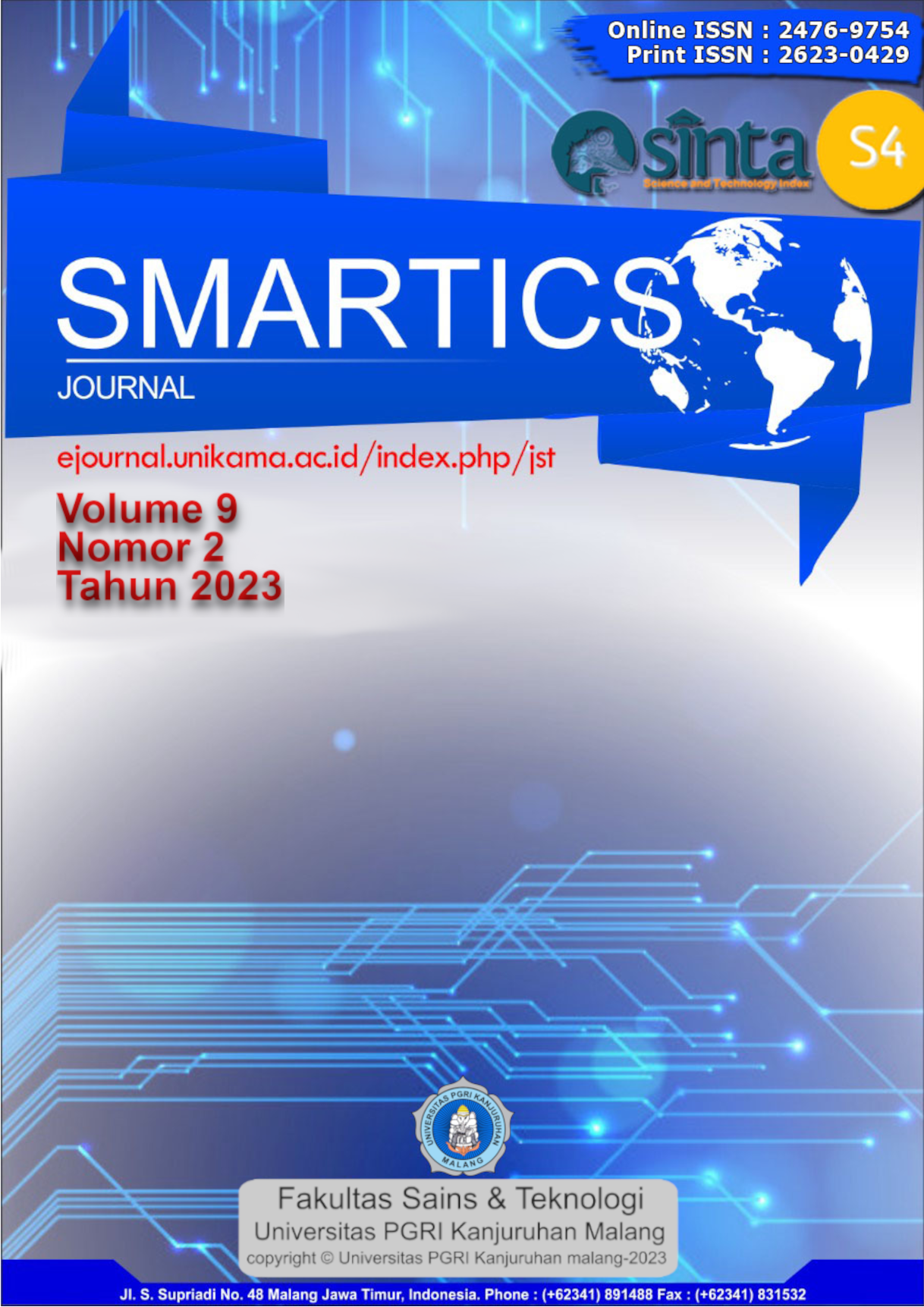Rancang Bangun Sistem Aplikasi Monitoring Daya Listrik Rumah Berbasis Android
DOI:
https://doi.org/10.21067/smartics.v9i2.8592Abstract
The need for household-scale electricity consumption is very closely dependent on household appliances that use electrical energy. The demand for household electricity has increased along with the Work From Home (WFH). If this is not managed optimally based on the aspect of its use, it will unconsciously have an impact on economic spending. The purpose of this study focuses on a prototype monitoring system for electrical quantities in the form of voltage, current strength and electric power in real time via the Android platform. The prototype that was created was able to collect realtime data every 1 minute and 5 minutes, respectively, resulting in a measurement accuracy of 92.99% and 81.85%. As well as reading accuracy of (36.60 + 2.42) Watt and (27 + 4.96) Watt. Based on the error results and the results of the reading accuracy of the prototype, a comparison was made between the delay of data retrieval per 1 minute and 5 minutes, it can be concluded that it has a higher reading accuracy per 1 minute. So that the suggestions and recommendations from further researchers regarding the design of electrical energy monitoring management use a delay time of more than one minute so as not to lose a lot of data information from the measurement results.
Downloads
Published
How to Cite
Issue
Section
License
Copyright (c) 2023 Muhammad Priyono Tri Sulistyanto, Danang Aditya Nugraha, Kurriawan Budi Pranata

This work is licensed under a Creative Commons Attribution-ShareAlike 4.0 International License.

This work is licensed under a Creative Commons Attribution-ShareAlike 4.0 International License.







